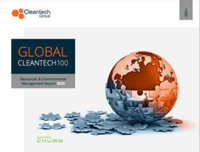Unlocking Blue Carbon Offsets – The Problems and Solutions for Ocean-Based Carbon Removal
Blue carbon is the carbon stored in coastal and marine ecosystems. Oceans absorb about 25% of annual CO2 emissions and have the capacity to hold thousands more gigatons of CO2. As such, many innovators are looking to the seas as the next big opportunity for carbon removal projects and offsets.
Attractiveness
The Voluntary Carbon Market (VCM) is seeing unprecedented demand for high-quality, nature-based carbon offsets, following corporate commitments to achieve net-neutral or zero emissions within the next few decades. As of September 2020, over 1,500 companies, 800 cities and 100 regions had made net-zero pledges. The Taskforce on Scaling Voluntary Carbon Markets (TSVCM) estimates demand for carbon credits will increase 15-fold by 2030 to $50 billion.
The Paris Agreement promotes Carbon Dioxide Removal (CDR) technologies, particularly reforestation and Integrated Assessment Models (IAM) have since found scenarios where we likely meet the <2 °C target will need to rely heavily on CDR.
Blue carbon offsets such as mangrove forests, and seaweed cultivation have huge carbon sequestration potential. Seaweed and seagrass grows fast, requires little infrastructure or maintenance, can be sold as high value products, and is thought to already sequester around 200 million tonnes of CO2 per year. Mangroves can store carbon above and below the surface, protect wildlife and reduce storm impacts by up to 50%.

However, at present very few blue carbon offsets have been independently verified and sold. Those that have been verified are mangrove-based projects piggybacking off forestry verification. This is due to the industries many technical challenges.
Blue Carbon Challenges
- Difficult to Measure: There is huge variability of carbon sequestration potential between habitats and over time, making it difficult to estimate or compare carbon potential of projects. Additionally, coastal ecosystems are poorly understood, comparisons of lab to field-based studies show significant variability in sequestration potential making it difficult to measure carbon captured.
- CO2 Effects: Mangroves and seagrasses may experience enhanced productivity due to higher CO2 levels, making it difficult to distinguish this effect from interventions to enhance productivity and thus carbon storage.
- Permanency: Ensuring permanence and preventing leakage is difficult. Land protection is also needed and conserving one area may displace land conversion activities to another area.
- Expertise: many countries and national agencies do not have sufficient experience with carbon project development in coastal and marine ecosystems and lack regional carbon storage and sequestration data.
Business Models
Due to the complexity of these ecosystems, a widely accepted method to calculate and validate blue carbon sequestration doesn’t exit. We spoke to Nick Wise, CEO of Ocean Protection NGO Ocean Mind who is currently working with Oxford University to investigate methodologies, “we are looking at the science of carbon absorption in the ocean, what types of ecosystems retain different levels and types of carbon. We are working on a systematic approach to measure and then present this at COP 26 to create awareness.” However, this project will be ongoing, and the organizations don’t plan to commercialize at this stage but may work with partners in the future.
In the meantime, the direct sale of blue carbon by-products like animal feed or fuel makes these innovators profitable:
- September 2019: Blue Ocean Barns, grower of seaweed to use as a cattle feed additive to reduce methane emissions, raised $5 million in a seed round to expand farming operations, led by Valor Siren Ventures.
- September 2020: CH4 Global, developer of a seaweed-derived animal feed product, entered a vendor partnership with Pirie Meats and will commercialize its animal feed project as Pirie Meat will invest $90 million on a processing plant. Organic Technology Holdings and Siemens Australia will also be innovation partners.
- June 2020: Carbix, developer of advanced enhanced weathering technologies transforming CO2 into raw materials, was selected to join the Indie Bio life sciences accelerator program.
Early-stage investors include charities and governments seeking to fund research and reduce national emissions:
- February 2021: Sea Forest, developer of commercial seaweed cultivation techniques in old mussel farms for use as feed supplement to reduce the methane emissions from cattle, raised $779,000 from the Australian Government ‘s Accelerating Commercialization grants.
- January 2021: Kelp Blue, developer of agri-foods, fertilizers, and blue carbon offsets from ocean kelp farming, raised $60 million (in principle) from investors Climate Fund Managers and Namibia Infrastructure Development and Investment Fund. The funding will be released in waves to build a series of kelp farms off the coat of Nambia to capture CO2. Kelp Blue estimate the kelp farms will be capable of absorbing more CO2 than is produced by the Netherlands annually.
- August 2020: Ocean Rainforest, developer of seaweed harvesting systems, raised $1.5 million led by WWF and existing backers.
Competition
This market is very early stage with few projects at commercial scale and very few incumbents. The greatest involvement of corporations is as customers. Standards on what constitutes a carbon removal credit or exactly how corporations can and can’t reduce their emissions don’t exist, nor are they likely to be retrospective. Therefore, some early adopters are purchasing unverified negative emissions with the understanding these innovators require capital for development:
- May 2021: Running Tide, developer of technologies to scale the naturally restorative benefits of oyster and kelp and provider of blue carbon offsets, received Project Finance funding from technology corporate, Stripe. The Funding is part of $2.75 million to support 6 early-stage carbon removal projects in Stripe’s second annual round of carbon removal purchases.
- December 2020: Planetary Hydrogen, producer of hydrogen while capturing and storing carbon dioxide which is turned into bicarbonate that fights ocean acidification, announced it sold its first negative CO2 emissions, which will be generated by Planetary Hydrogen’s pilot plant, to e-commerce giant Shopify.
To look out for…
In even earlier stages of development are more grey infrastructure solutions. For example, Belgium innovator, Out of the Blue has developed a patent pending, marine geoengineering solution which removes ocean surface CO2 and stores it underground. The company plans to sell the storage as carbon offsets. Although, with carbon sequestration and permanence already difficult to measure in marine environments, the impact of these technologies on fragile ecosystems will be equally, if not more, difficult to understand.
It is unlikely verified and robust blue carbon credits will appear on the offset marketplace in the next few years, but with the demand for high-quality nature-based offsets outstripping supply and early adopters investing in research; the blue carbon market can further boost the VCM within the decade.



